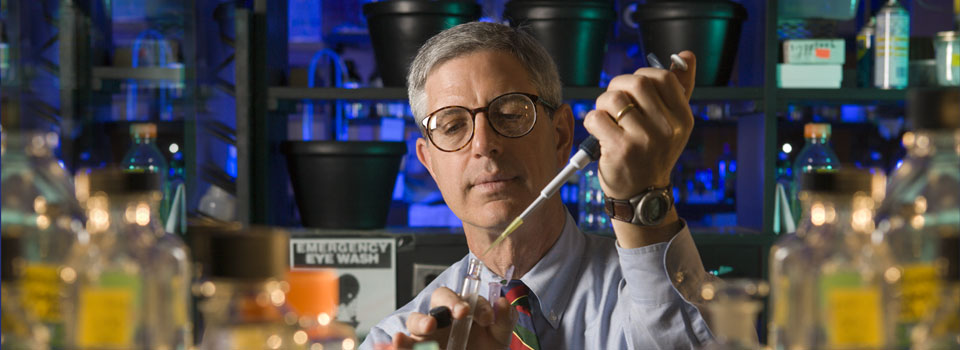Hirano bodies are almost indescribably tiny objects found in nerve cells of people suffering from conditions such as Alzheimer’s, mad cow and Lou Gehrig’s diseases. Yet for decades, researchers weren’t sure if these structures helped cause the conditions or appeared after onset of the disease and had some other role.
Now, in research at the University of Georgia, a cellular biologist and his colleagues have found that Hirano bodies may play a protective role in the progression of neurodegenerative diseases such as Alzheimer’s. And to find out why this may be happening, they have developed the world’s first transgenic mouse model that has Hirano bodies, which will open new frontiers on how these poorly understood structures may be involved with some of humankind’s most difficult-to-treat diseases.
“This work gives us a first view of the possible effects of Hirano bodies,” said Marcus Fechheimer, Josiah Meigs Professor of cellular biology at UGA. “Now we know that Hirano bodies do not kill cells and are not toxic to mice. This new model will allow us to ask whether Hirano bodies have any effect on progression of disease in the brain.”
While the research offers no cure for diseases such as Lou Gehrig’s and mad cow, it does create a new area of research into understanding how these diseases operate in the human body and why they are so difficult to treat. And the problem is vast: the Alzheimer’s Association reports there are 5.4 million sufferers of that disease in the U.S. alone.
The latest research announcing the transgenic mouse model for the formation of Hirano bodies was just published in the journal BMC Neuroscience. Co-authors with Fechheimer include Ruth Furukawa in the Fechheimer lab at UGA, as well as John Wagner and Michael Stramiello of the College of Veterinary Medicine, also at UGA; and Sangdeuk Ha, formerly of UGA and now with Beth Israel Deconess Medical Center at the Harvard Medical School.
Fechheimer’s lab has been at the center of research on Hirano bodies for nearly a decade. In 2002, it reported for the first time a method of inducing the bodies to form. Interestingly, these “inclusions” also show up in autopsies of people suffering from diabetes, alcoholism and cancer. Hirano bodies also are associated with normal aging. So understanding what they do when neurological processes go off the rails could add an important step in understanding how diseases that cause so much suffering progress.
The new model system will allow Fechheimer and his colleagues to study the impact of Hirano bodies in a living, mammalian system and to investigate the pathways for formation and degradation of the bodies. It will also allow them to test whether Hirano bodies promote or modulate the development of pathology or affect the deterioration of learning and memory that characterize both the human disease and the mouse models of these conditions.
The mouse model research was supported by grants from the Alzheimer’s Association and the National Institutes of Health. The NIH and Alzheimer’s Association, as well as the National Science Foundation also supported the research reported in Neurobiology of Aging.
